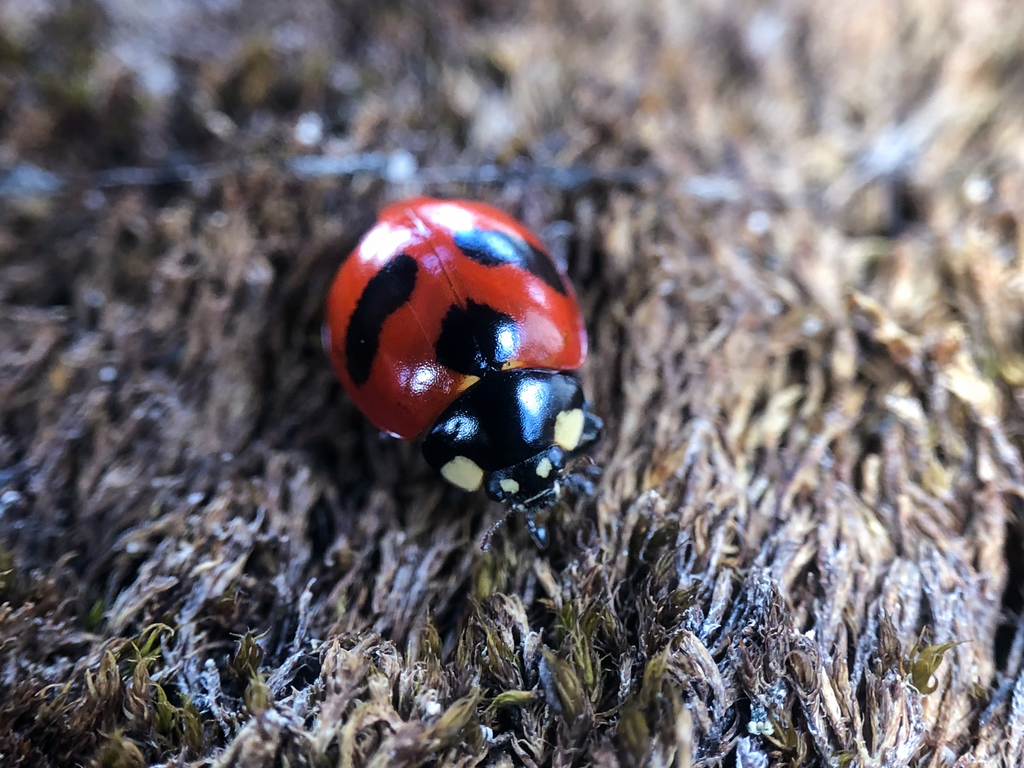
Mountain Lady Beetle © Joshua Lincoln
The Mountain Lady Beetle is native to North America. Its wing covers are red or orange and often have 5 black spots, some of which elongate to look a bit like bands. This species is most active from June to August.
Status
Native
Listed as Vulnerable in Alberta and Apparently Secure in British Columbia. The Mountain Lady Beetle has not been ranked in the United States.
Last Seen
2017
Fun Fact
Mountain Lady Beetles are also known as Tamarack Ladybugs.
Last Seen
The Mountain Lady Beetle is between 5.2 and 7.0 mm in length.
- Head: Black, with two orange or pale to white spots, one above each eye.
- Pronotum: Black, with two orange or pale to white patches. Patches occur at the anterolateral margins of the pronotum (front, side corners) and are roughly square in shape.
- Elyra: Orange to deep orange or red in color. Exhibits five spots total. The top spot spans both elytra, and appears connected to the pronotum. The other four spots are large and appear as oval to rectangular bands which nearly transect the entire elytron. The top bands can also appear as two separate spots (making 7 spots total).
- Legs: Dark brown to black in color.
- Often confused with: Transverse Lady Beetle, Two-spotted Lady Beetle, Seven-spotted Lady Beetle.
Habitat
Primarily associated with coniferous forests. Has also been found in parklands and mixed forests.
General Range
General range is divided into a western and eastern range. Western range: west of the Great Lakes, south to northern Texas, west to Nevada and Washington, then north through Alaska. Eastern range: narrow range north of Michigan, south to Massachusetts, east to the coast, and north to Quebec.
It appears that this species is more common in the western parts of its range, distribution in the east seems to be restricted geographically and patchy.
Food
Plant lice, aphids, soft-bodied insects.
Life History
Eggs usually take four days to hatch, but can take between three and eight days. The larval stage takes between 12 to 14 days to complete, and Mountain Lady Beetles pupate for four to 6 days. On average, it takes 23 days for a Mountain Lady Beetle to mature from egg to adult. Adults can live several months. Eggs begin getting laid in May and adults begin to emerge in mid- to late-June.
Found most often between June and August. Little information exists on this lady beetle.
More Information
You can find more information about Mountain Lady Beetles using the following links:
Vermont Distribution
Visit the iNaturalist Observation Map and Occurrence Records to find out where Mountain Lady Beetles have been seen in Vermont.








